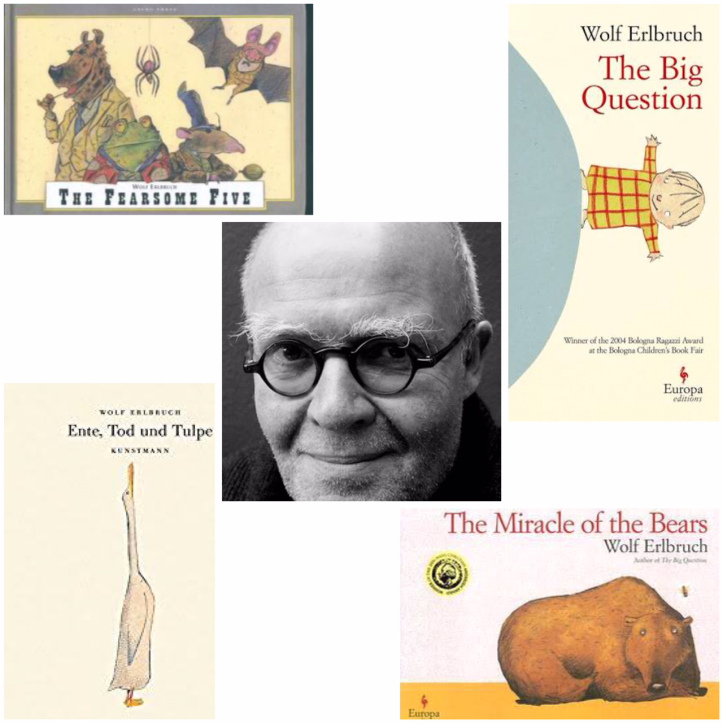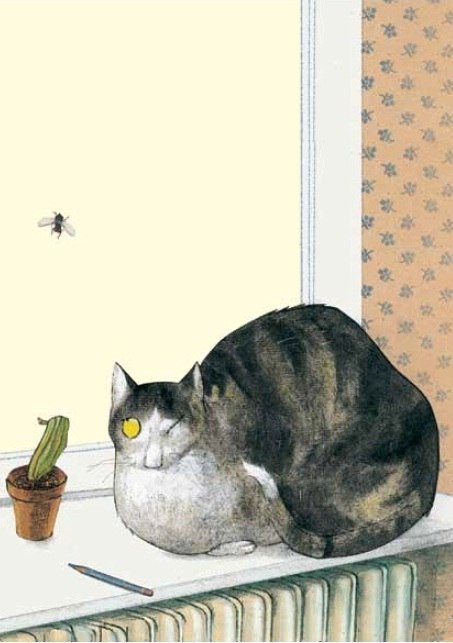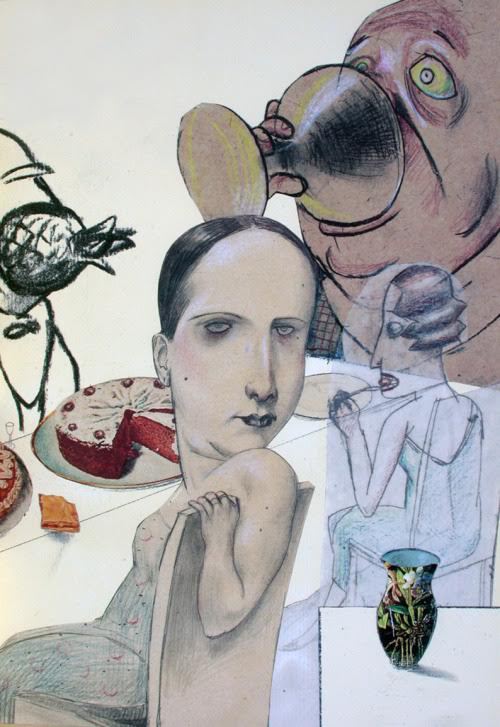Fanfare is a new section on the Duckbill blog, where authors talk about authors they love and illustrators talk about illustrators they love. The idea is that we all discover wonderful new creators and their fantastic work. If you want to write about someone whose work you love, do write to us!
Priya Sebastian primarily uses charcoal, pastel and the technique of collage for illustrating. She likes drawing big pictures, cutting them up and mixing them to see what surprises emerge. She sends these results to her publishers.

Wolf Erlbruch (born 1948) is a German illustrator and writer. His books have won many awards including the Deutscher Jugendliteraturpreis, the Hans Christian Andersen Medal and the Astrid Lindgren Award.
One of the most beautiful picture books in my collection is Duck, Death and the Tulip by Wolf Erlbruch, which deals with the subject of death with so much intelligence and grace. The book is hailed as a classic and it speaks to both children and adults alike in the simplicity and beauty of its illustrations and Spartan text.


Wolf Erlbruch (born in 1948) is a German illustrator and is the recipient of numerous prestigious awards notably the Hans Christian Andersen medal and the Astrid Lindgren Memorial award. His books tackle difficult themes like death and parent child relationships.
Wolf Erlbruch draws like few can. While he employs many different media and techniques, he understands the anatomies of his subjects, whether cats, ducks or people and plays with them by exaggerating what matters to him at the moment to say what he wants to say.

An example is this image above. It is a strong composition where the cat, the cactus and the radiator are clumped together at the bottom. Our eyes are led towards this group by the vertical lines of the window pane and the patterned wall paper running parallel to the edge of the image. The curved line of the cat’s twitching tail and its yellow eye leads our eyes to the empty space where floats the lone fly.
This arty sense of aesthetics is directed by a very personal and slightly perverse sense of humour, a kind of sympathy-disdain for bourgeois homeliness (the miserable cactus, the pedestrian pencil on the window sill, the floral wall paper, the radiator suggesting unsophisticated cosiness). The result is an easy and friendly imagery that belies the depth of what lies beneath the surface (the tension in an apparently sleepy situation that results from the relation between the cat’s twitching tail, its look and the fly).

If his books have a moral, Erlbruch says that people should look at themselves from a distance and accept the qualities that are not quite so appealing about themselves.





